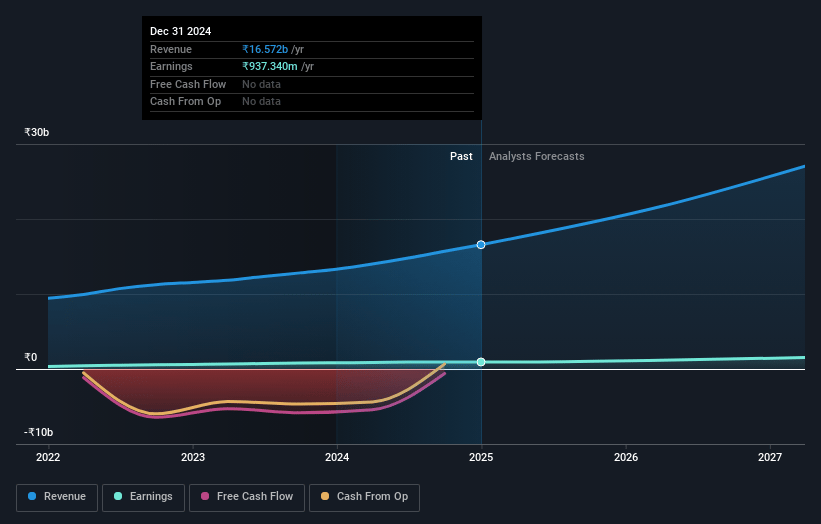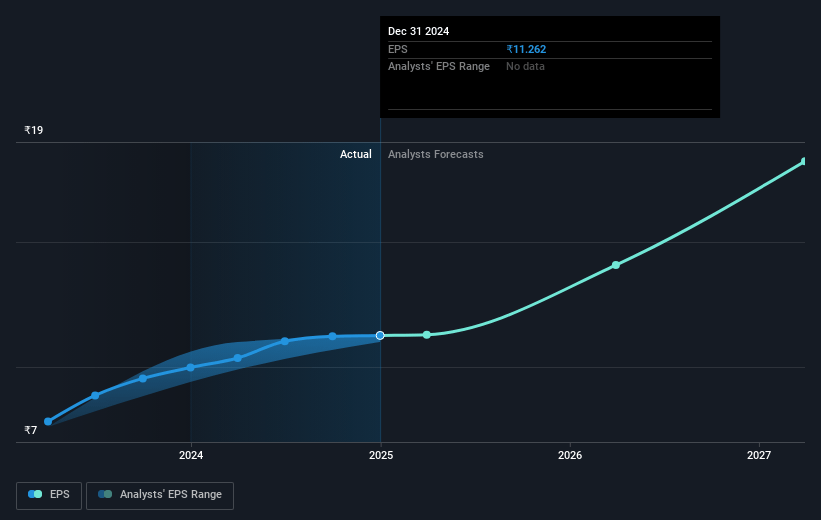Key Takeaways
- Fino Payments Bank's digital shift and transaction strategy is set to boost revenue and margins through lower costs and internally managed services.
- Planned small finance bank transition and tech upgrades aim to expand service range, improve scalability, and enhance financial efficiency.
- Operational shifts and technology investments create profitability challenges amid cyber risks and industry regulations impacting various revenue streams.
Catalysts
About Fino Payments Bank- Provides various types of financial services in India.
- Fino Payments Bank's strategic progression towards digital capabilities is expected to significantly enhance their revenue streams, with digital revenue anticipated to rise from 21% of total revenue in FY '25 to above 25% in FY '26. This shift is likely to bolster both revenue and profit margins due to the lower operational costs associated with digital services.
- The transition from off us to on us transactions continues to show results, with higher revenue per customer noted for on us transactions. This strategy is expected to drive up revenue per customer and improve net margins as more services become internally managed.
- Fino Payments Bank is positioning itself for a transition to a small finance bank (SFB), which will enable it to go beyond its current limitations and offer a wider array of financial services. This expansion could potentially lead to significant revenue growth and earnings enhancement once regulatory approval is obtained.
- Technology infrastructure overhauls, including a new core banking platform and AI implementation for risk management, are expected to unlock scalability, reduce operational costs, and enhance system resilience, positively impacting the net margins and overall financial efficiency.
- The bank is focusing on leveraging their extensive distribution network and fintech partnerships to capture new market segments, particularly in underserved areas. This focus on expanding customer bases and deepening merchant engagements is likely to yield greater revenue and market presence, supporting long-term earnings growth.
Fino Payments Bank Future Earnings and Revenue Growth
Assumptions
How have these above catalysts been quantified?- Analysts are assuming Fino Payments Bank's revenue will grow by 20.2% annually over the next 3 years.
- Analysts assume that profit margins will increase from 5.3% today to 5.9% in 3 years time.
- Analysts expect earnings to reach ₹1.8 billion (and earnings per share of ₹21.57) by about July 2028, up from ₹925.3 million today. The analysts are largely in agreement about this estimate.
- In order for the above numbers to justify the analysts price target, the company would need to trade at a PE ratio of 22.7x on those 2028 earnings, down from 25.1x today. This future PE is greater than the current PE for the IN Banks industry at 12.6x.
- Analysts expect the number of shares outstanding to decline by 0.09% per year for the next 3 years.
- To value all of this in today's terms, we will use a discount rate of 12.55%, as per the Simply Wall St company report.
Fino Payments Bank Future Earnings Per Share Growth
Risks
What could happen that would invalidate this narrative?- The digital payments space is witnessing increased cyber fraud risks, necessitating heavier investments in risk mitigation, potentially impacting net margins.
- The remittance business is experiencing a decline due to regulatory changes and shifts in customer behavior, leading to a potential decrease in revenue in this segment.
- The CMS business is facing headwinds from increased competition, resulting in declining take rates and thus potentially contracting revenue growth in this segment.
- The transition to a small finance bank (SFB) involves operational and regulatory challenges, including the need to exit the BC business and invest significantly in technology, which may affect earnings during the transition phase.
- The high costs associated with technology upgrades and maintaining a low cost-to-income ratio could exert pressure on net margins and may impact near-term profitability.
Valuation
How have all the factors above been brought together to estimate a fair value?- The analysts have a consensus price target of ₹345.0 for Fino Payments Bank based on their expectations of its future earnings growth, profit margins and other risk factors. However, there is a degree of disagreement amongst analysts, with the most bullish reporting a price target of ₹390.0, and the most bearish reporting a price target of just ₹300.0.
- In order for you to agree with the analyst's consensus, you'd need to believe that by 2028, revenues will be ₹30.4 billion, earnings will come to ₹1.8 billion, and it would be trading on a PE ratio of 22.7x, assuming you use a discount rate of 12.5%.
- Given the current share price of ₹279.35, the analyst price target of ₹345.0 is 19.0% higher.
- We always encourage you to reach your own conclusions though. So sense check these analyst numbers against your own assumptions and expectations based on your understanding of the business and what you believe is probable.
How well do narratives help inform your perspective?
Disclaimer
AnalystConsensusTarget is a tool utilizing a Large Language Model (LLM) that ingests data on consensus price targets, forecasted revenue and earnings figures, as well as the transcripts of earnings calls to produce qualitative analysis. The narratives produced by AnalystConsensusTarget are general in nature and are based solely on analyst data and publicly-available material published by the respective companies. These scenarios are not indicative of the company's future performance and are exploratory in nature. Simply Wall St has no position in the company(s) mentioned. Simply Wall St may provide the securities issuer or related entities with website advertising services for a fee, on an arm's length basis. These relationships have no impact on the way we conduct our business, the content we host, or how our content is served to users. The price targets and estimates used are consensus data, and do not constitute a recommendation to buy or sell any stock, and they do not take account of your objectives, or your financial situation. Note that AnalystConsensusTarget's analysis may not factor in the latest price-sensitive company announcements or qualitative material.











